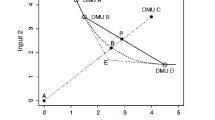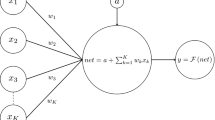Abstract
Since 1992 the Italian local health units (LHU) gained financial independence and became responsible to provide and deliver health care at the local level. Management and financial accounting represent the tool utilized to monitor their net income and the working capital every year. From 2001 on, LHU budget data have being summarized by means of the “income statement”. The income statement is considered the most relevant form for the monitoring of healthcare expenditures. A big amount of data have been collected after that obligation of publishing the income statement. The application of new methods for a better understanding of relationships among variables would be worthwhile. The development of artificial neural networks (ANNs) can represent a useful tool to analyze the relationships among these variables. The purpose of this paper is showing the potentialities of ANNs and especially of artificial neural networks what-if theory (AWIT) model when applied to health budgetary data. This innovative methodology has been employed, in the present paper, to analyze data from five Italian Regions, carrying out some comparison among them. In short, using one dataset that is defined as being the ideal standard containing the relationships necessary to measure desired outcomes, another dataset can be compared to determine its degree of closeness. We can determine the degree of closeness of the second or treated dataset with the original standard. This is the key concept of the method called AWIT. The descriptive analysis carried out outlines the areas of waste LHU and suggests to develop strategies to contrast an inefficient use of resources.














Similar content being viewed by others
Change history
28 June 2016
An erratum to this article has been published.
References
Bengio, Y.: Learning deep architectures for AI. Found. Trends® Mach. Learn. 2(1), 1–127 (2009). doi:10.1561/2200000006
Buscema, P.M.: A general presentation of artificial neural networks. Subst. Use Misuse 32(1), 97–112 (1997)
Buscema, P.M.: A brief overview and introduction to artificial neural networks, substance use & misuse, special issue on the middle eastern summer institute on drug use. Proceedings 1997/1999 37(8–10), 1093–1148 (2002)
Buscema, M., Grossi, E., Snowdon, D., Antuono, P.: Auto-Contractive Maps: An artificial adaptive system for data mining. An application to Alzheimer disease. Curr. Alzheimer Res. 5(5), 481–498 (2008)
Buscema, P.M., Tastle, W.J.: Artificial neural network what-if theory. Int. J. Inf. Syst. Soc. Change. 6(4), 52–81 (2015). doi:10.4018/IJISSC.2015100104
Hinton, G.E., Osindero, S., Teh, Y.-W.: A fast learning algorithm for deep belief nets. Neural Comput. 18(7), 1527–1554 (2006)
Hinton, G.E., Salakhutdinov, R.R.: Reducing the dimensionality of data with neural networks. Science 313, 504–507 (2006)
Larochelle, H., Bengio, Y.: Classification using discriminative restricted boltzmann machines. In: Proceedings of the 25th International Conference on Machine Learning, Helsinki, Finland (2008)
Le, Q.V., Ranzato, M.C., Monga, R., Devin, M., Chen, K., Corrado, G.S., Dean, J., Ng, A.Y.: Building high-level features using large scale unsupervised learning. In: Proceedings of the 29th International Conference on Machine Learning, Edinburgh, Scotland (2012)
Mennini, F.S., Ruggeri, M., Coretti, S., Gitto, L., Russo, S., Cicchetti, A., Maurelli G., Buscema, P.M.: Does regional belonging explain the similarities in the expenditure determinants of Italian healthcare deliveries? An approach based on artificial neural networks, submitted to Management Science, (2015)
Raiko, T., Valpola, H., LeCun, Y.: Deep learning made easier by linear transformations in perceptrons. In: Proceedings of the 15th International Conference on Artificial Intelligence and Statistics (AISTATS) La Palma, Canary Islands. Volume XX of JMLR:W&CP XX (2012)
Raina, R., Madhavan A., Ng, A.Y.: Large-scale deep unsupervised learning using graphics processors. In: Proceedings of the 26th International Conference on Machine Learning, Montreal (2009)
Author information
Authors and Affiliations
Corresponding author
Rights and permissions
About this article
Cite this article
Buscema, P.M., Maurelli, G., Mennini, F.S. et al. Artificial neural networks and their potentialities in analyzing budget health data: an application for Italy of what-if theory. Qual Quant 51, 1261–1276 (2017). https://doi.org/10.1007/s11135-016-0329-y
Published:
Issue Date:
DOI: https://doi.org/10.1007/s11135-016-0329-y




